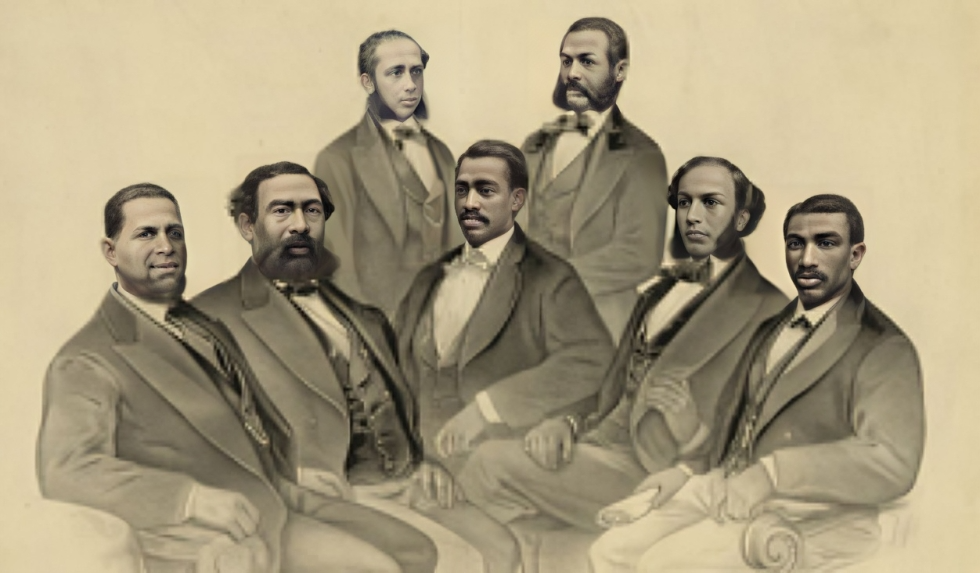
The Fifteenth Amendment to the U.S. Constitution gave the right to vote to all male citizens regardless of color or previous condition of servitude. African Americans became involved in the political process not only as voters but also as elected representatives at the local, state, and national level. Although their elections were often contested by whites and members of legislative bodies were usually reluctant to receive them, many African American men ably served their country during Reconstruction. Pictured here are Senator Hiram R. Revels (R-MS) and Representatives Benjamin S. Turner (R-AL), Josiah T. Walls (R-FL), Joseph H. Rainey (R-SC), Robert Brown Elliot (R-SC), Robert D. De Large (R-SC), and Jefferson F. Long (R-GA)
The print titled “The First Colored Senator and Representatives—In the 41st and 42nd Congress of the United States” was published by Currier & Ives in 1872. Currier & Ives was a prominent American printmaking firm known for its colorful lithographs depicting various aspects of American life in the 19th century.
This particular print celebrates the election of the first African American members of the United States Congress. Specifically, it highlights Hiram Revels and Blanche K. Bruce, who were the first African American senators, and several representatives who served during the Reconstruction era following the Civil War.
Hiram Revels, a Republican from Mississippi, was the first African American to serve in the U.S. Senate, filling a vacancy in 1870. Blanche K. Bruce, also from Mississippi, was the first African American to serve a full term in the Senate, from 1875 to 1881.
The print by Currier & Ives showcases these historic figures in a period of great change and progress in American politics. It reflects the optimism and challenges of the Reconstruction era, as African Americans began to play a significant role in government for the first time.
Currier & Ives prints like this one are valuable historical documents, capturing both the political and social landscape of their time, and they offer insight into the progress and struggles of post-Civil War America.